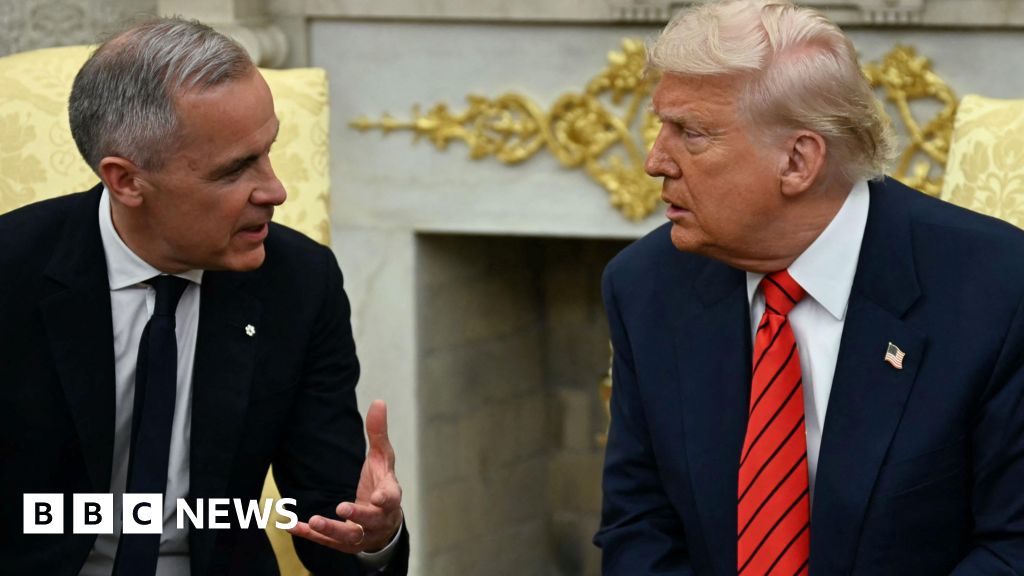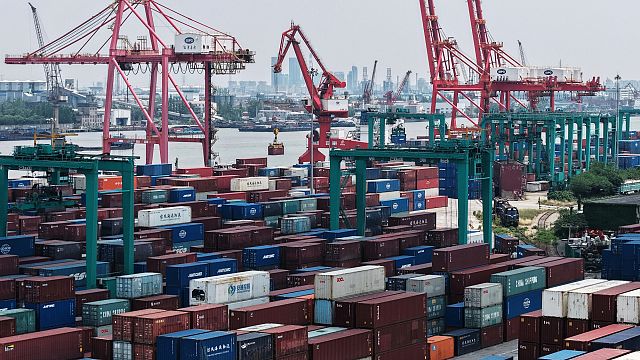S&P 500 Hits a Record High, Surging Through Trump Turmoil


The S&P 500 rose to a new high on Friday, completing a swift recovery to a level last seen in February before expectations of a new business-friendly government gave way to widespread fears over the impact of trade tariffs.
It is a remarkable turnaround for a stock market that just a few months ago was being battered by investors’ fears that President Trump’s tariff proposals would bring chaos to global trade.
The S&P 500 has regained all the ground it lost in March and early April, when Mr. Trump proposed his broad array of tariffs and ignited concerns that the United States’ role as the world’s most dynamic and reliable economy was coming to a self-inflicted end.
The rally began on April 9, when Mr. Trump delayed his administration’s steepest tariffs until July. Since then, the S&P 500 has risen more than 23 percent, despite continued challenges like inflation and a war in the Middle East.
Mr. Trump’s decision to delay new tariffs cemented a perception among investors that the government would not let the stock market fall too far. The S&P 500 came within a whisker of entering a bear market — a marker of deep investor pessimism — the day before he said he would pause the tariffs while he sought deals with trading partners.
The president’s about-face — and the ensuing rally — has also validated investors’ strategy of “buying the dip” during the market’s sell-offs, hoping to reap big gains when it rises.
The index hit the record on Friday despite Mr. Trump’s announcement that he would end trade talks with Canada. The renewed trade tensions muted the market’s earlier gains during the day, but not enough to keep the S&P 500 from breaching the record as it nudged 0.5 percent higher.
The recent rally has been bolstered by solid economic data that have yet to substantiate investors’ fears of a rise in layoffs, or a significant uptick in inflation, stemming from the new administration’s policies. More recently, the easing of tensions between Iran and Israel led to lower oil prices and a further rise in the stock market.
Fears nonetheless remain. Many analysts and economists expect signs of weakness to show more clearly in data reported later in the year.
“U.S. policy uncertainty makes sticky prices, stalled jobs growth and declining business profits likely in the coming months, but they’re not likely to come with a ‘bang’ in the next month or two of data,” said Lauren Goodwin, an economist at New York Life Investments. “Until then, the market’s cautiously constructive tone can persist.”
Still, there are signs that the current rally is not backed by widespread enthusiasm among investors. Notably, the U.S. dollar remains weak, a possible sign of waning demand for U.S. assets.
“It is incomprehensible that markets are so buoyant,” said Kristina Hooper, chief market strategist at Man Group, a global investment manager, pointing to tariff uncertainty and slowly worsening economic indicators. “Yet stocks keep climbing higher,” she added. “It seems to be a recipe for disappointment.”
Much of the rally has come from a handful of large technology companies that have an outsize impact on the index. The gains of these companies, whose share prices were beaten down when tariffs were initially announced, mask the more muted recovery for the rest of the market.
Without the performance of just seven stocks — Microsoft, Apple, Amazon, Nvidia, Meta, Alphabet and Tesla, nicknamed the Magnificent 7 — the S&P 500 would still be roughly 10 percent from its peak, according to data from Howard Silverblatt, senior index analysts at S&P Dow Jones Indices.
And while more than 8 out of 10 stocks in the index have risen over that period, the average move higher is just a little over 2 percent, according to Mr. Silverblatt, far less than the more than 30 percent gain for the Magnificent 7 stocks.
Though the rally shows no immediate signs of ending, investors in derivatives markets are positioned for a fall later in the year. They most likely represent, in part, stock investors trying to protect their investments from a potential sell-off.
Put simply, many of the concerns that investors and analysts held before the tariffs were introduced remain. But given that the sharp impact of the tariff announcement has been largely undone, stocks have returned to where they were.
Mr. Trump’s decision to back off his proposed tariffs has been a big driver of the market’s resurgence. Since April 9, every big move higher — when the S&P 500 rose 2 percent or more — has occurred on a day with a significant announcement reining in tariffs. The largest was 3.3 percent on May 12, the day China and the United States agreed to pause reciprocal tariffs that had risen above 100 percent and that had effectively amounted to a trade embargo.
Tariffs continue to whipsaw the market. On Friday, the Trump administration signaled that it was willing to give countries more time to reach deals, instead of reimposing tariffs in July. Later in the day, though, Mr. Trump said he had called off trade talks with Canada over a new tax that it will impose on digital services, causing stocks to lose some steam.
Investors have also become hopeful that the Federal Reserve may lower interest rates sooner than previously thought. Lower interest rates tend to offer a tailwind to stock prices, reducing costs for companies while also encouraging consumers to spend.
Still, it’s unlikely to be enough to shift analysts’ expectations of declining profits for companies in the current quarter, and that could disrupt the steady march higher in the stock market.
“What we are going to get is more warnings and more uncertainty from corporations, in my opinion, and I think that is going to bring a dose of reality to investors,” Ms. Hooper said.
What's Your Reaction?
 Like
0
Like
0
 Dislike
0
Dislike
0
 Love
0
Love
0
 Funny
0
Funny
0
 Angry
0
Angry
0
 Sad
0
Sad
0
 Wow
0
Wow
0







































